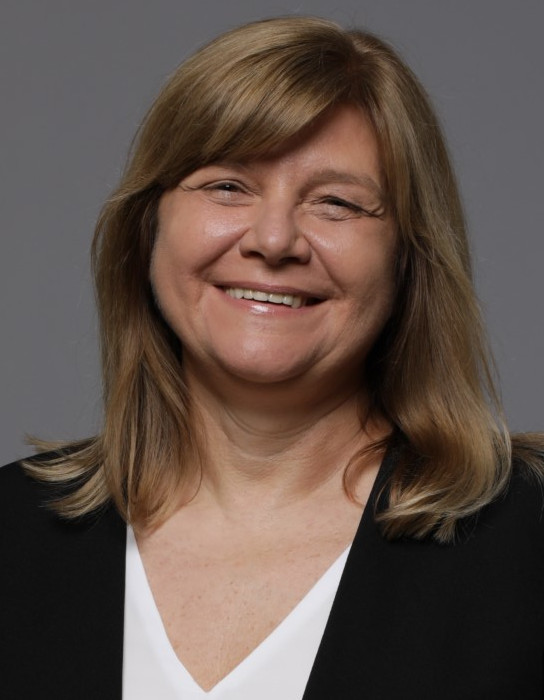Measurements in Communication Systems
Data is displayed for academic year: 2023./2024.
Exercises
Laboratory exercises
Course Description
The basic measurement methods and instrumentation in communication systems are introduced with an emphasis on radio frequency and microwave measurements, propagation measurements and measurements of basic system parameters such as BER, EVM, constellation diagram, system throughput and similar. Particular emphasis of the course is on the practical work of students, which covers examples of measurements of basic parameters of circuits and systems in communications and electronics. Based on the theoretical and practical knowledge acquired, students will be able to measure all the basic measurement quantities that occur in everyday engineering practice in radio communications and electronics.
Study Programmes
University graduate
[FER3-HR] Audio Technologies and Electroacoustics - profile
Elective Courses
(2. semester)
[FER3-HR] Communication and Space Technologies - profile
Core-elective courses
(2. semester)
[FER3-HR] Computational Modelling in Engineering - profile
Elective Courses
(2. semester)
[FER3-HR] Computer Engineering - profile
Elective Courses
(2. semester)
[FER3-HR] Computer Science - profile
Elective Courses
(2. semester)
[FER3-HR] Control Systems and Robotics - profile
Elective Courses
(2. semester)
[FER3-HR] Data Science - profile
Elective Courses
(2. semester)
[FER3-HR] Electrical Power Engineering - profile
Elective Courses
(2. semester)
[FER3-HR] Electric Machines, Drives and Automation - profile
Elective Courses
(2. semester)
[FER3-HR] Electronic and Computer Engineering - profile
Elective Courses
(2. semester)
[FER3-HR] Electronics - profile
Elective Courses
(2. semester)
Elective Courses of the Profile
(2. semester)
[FER3-HR] Information and Communication Engineering - profile
Elective Courses
(2. semester)
[FER3-HR] Network Science - profile
Elective Courses
(2. semester)
[FER3-HR] Software Engineering and Information Systems - profile
Elective Courses
(2. semester)
Learning Outcomes
- Identify basic measurement quantities in the radio frequency and microwave areas
- Explain the structure of standard laboratory instruments (power meter, signal generator, scalar and vector network analyzer)
- Select the appropriate measurement method and appropriate measurement instrumentation for each fundamental measurement in RF and microwave range (power, frequency, scatter parameters, spectrum, noise factor, EM field, antenna gain)
- Evaluate measurement error and its impact on interpretation of measurement results
- Explain the basic principles of measurement in system-level communications
- Select appropriate measurement method and appropriate measuring instrument for determining constellation diagram, EVM diagram, BER, throughput
- Explain the basic principles of measuring propagation aspects in communication systems
- Choose the appropriate measurement method and appropriate measuring instrument for determining diversity, system delays, scattering
Forms of Teaching
Lectures
--
Laboratory--
Grading Method
| Continuous Assessment | Exam | |||||
|---|---|---|---|---|---|---|
| Type | Threshold | Percent of Grade | Threshold | Percent of Grade | ||
| Laboratory Exercises | 50 % | 20 % | 50 % | 20 % | ||
| Mid Term Exam: Written | 0 % | 20 % | 0 % | |||
| Final Exam: Written | 0 % | 20 % | ||||
| Final Exam: Oral | 40 % | |||||
| Exam: Written | 0 % | 30 % | ||||
| Exam: Oral | 50 % | |||||
Comment:
--
Week by Week Schedule
- Basic measurement quantities in high-frequency and microwave bands. Laboratory sources of high-frequency and microwave signals. Measurement errors
- Power measurements. Calorimeter. Bolometer. Thermocouple. Diode detectors. Measurement of electromagnetic field strength. Basic field strength sensors. Sensitivity.
- Spectrum. Spectrum analyzer. Resolution bandwidth. Video bandwidth.
- Measurement of scattering parameters. Scalar and vector network analyzer. Calibration.
- Anechoic and semi-anechoic chamber. Reverberation chamber. Antenna measurements. Measurement of gain and radiation patterns. Near-field and far-field measurements.
- Measurement of noise figure and noise temperature. Y-factor method. Measurement with external mixer. Measurements of nonlinear effects. Nonlinear signal scattering.
- Propagation measurement system. Diversity measurements. Delay measurements.
- Midterm exam
- Constellation diagram. Error-vector magnitude measurements.
- Eye diagram measurements.
- BER testing.
- Network accessibility and retainability.
- Handover measurements.
- IP throughput measurements in 3G/4G mobile systems.
- Final exam
Literature
For students
General
ID 222443
Summer semester
5 ECTS
L0 English Level
L1 e-Learning
45 Lectures
0 Seminar
15 Exercises
26 Laboratory exercises
0 Project laboratory
0 Physical education excercises
Grading System
89 Excellent
76 Very Good
63 Good
50 Sufficient


 Pristupačnost
Pristupačnost

